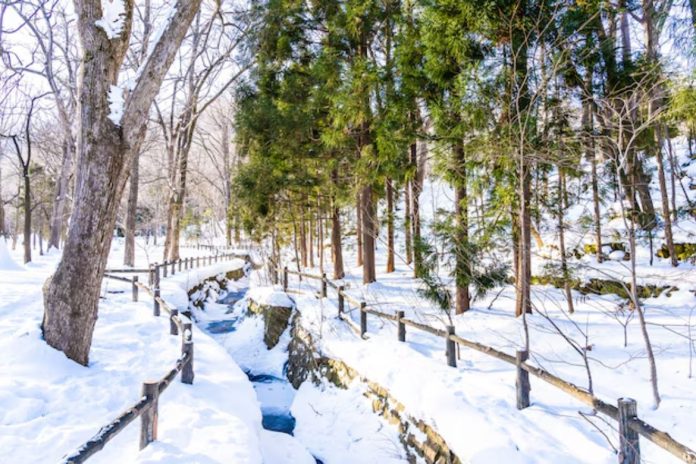As winter sets in, harsh weather conditions like snow, ice, and freezing temperatures can take a toll on your fence. If not properly maintained, exposure to moisture and extreme cold can lead to warping, cracking, or even structural damage. To protect your fence from winter, it’s essential to take a few preventive measures before the season’s worst arrives. With the right preparation, you can extend the life of your fence and keep it looking its best year-round.
1. Inspect and Repair Before Winter Hits
Before winter arrives, conduct a thorough inspection of your fence. Check for:
- Loose boards or panels that need securing.
- Rot or decay in wooden fences, which can worsen with moisture.
- Rust on metal fences, which can spread when exposed to winter elements.
- Cracked or leaning posts, which may weaken under heavy snow or wind.
Addressing these issues before freezing temperatures set in can prevent minor problems from turning into major repairs. If necessary, tighten screws, replace damaged boards, and treat rust spots to reinforce your fence against the cold.
2. Trim Overhanging Branches and Clear Vegetation
Winter storms can bring heavy snow and ice, which weigh down tree branches and may cause them to break onto your fence. To prevent damage:
- Trim back any overhanging branches before snowfall.
- Remove vines or plants that are growing on or near the fence, as they can trap moisture and lead to decay.
- Keep the area around the fence clear to allow proper air circulation and prevent mold or mildew buildup.
Pruning nearby vegetation not only reduces the risk of falling debris but also keeps your fence dry and in good condition.
3. Apply a Protective Coating
Adding a protective sealant is one of the best ways to protect your fence from winter damage. Different fencing materials require specific treatments:
- Wood fences: Apply a weatherproof stain or sealant to prevent moisture absorption, which can lead to rot and warping.
- Metal fences: Use a rust-resistant coating or paint to protect against corrosion from snow and ice.
- Vinyl fences: Though naturally resistant to moisture, vinyl fences benefit from a pre-winter cleaning to remove dirt and prevent buildup.
A fresh protective coat creates a barrier against the elements, helping your fence withstand winter’s challenges.
4. Clear Snow and Ice Regularly
Allowing snow and ice to pile up on your fence can put unnecessary stress on the structure, increasing the risk of bending or breaking. To prevent this:
- Use a soft broom or brush to clear snow off your fence after heavy snowfall.
- Avoid using a shovel or hard tools, which can scratch wood or vinyl fences.
- If ice builds up, gently remove it instead of forcing it off, as this can crack the material.
Keeping your fence free of excess weight will help maintain its integrity throughout the winter.
5. Protect Fence Posts from Freezing Temperatures
Fence posts are particularly vulnerable in winter, as frozen ground can cause shifting, leaning, or cracking. To reinforce them:
- Ensure proper drainage around the posts to prevent water from pooling and freezing.
- Wrap wooden posts with burlap or foam insulation to shield them from extreme temperature changes.
- Check for leaning posts after heavy snowstorms, reinforcing them as needed.
Taking extra care of your fence posts can help keep your entire fence stable during winter’s freeze-thaw cycles.
6. Avoid Piling Snow Against Your Fence
When clearing your driveway or yard, be mindful of where you pile snow. Large amounts of snow pushed against the fence can lead to excess moisture exposure, causing wood to rot or metal to corrode. Instead:
- Pile snow away from the fence line to prevent pressure buildup.
- Avoid using salt near wooden or metal fences, as it can cause damage and discoloration.
- Create a designated snow pile area to direct heavy snow away from the fence structure.
Managing snow placement will reduce stress on your fence and help it last longer.
7. Reinforce Your Fence Against Wind and Storms
Winter storms often bring high winds, which can cause fence panels to loosen or even topple over. To prevent wind damage:
- Secure loose panels and screws before winter begins.
- Consider adding windbreaks or hedges near open areas to reduce wind impact.
- If your area experiences frequent strong winds, opt for a slatted fence design that allows wind to pass through rather than hitting a solid barrier.
Proper reinforcement can help your fence withstand winter’s toughest weather conditions.
Winter Fence Maintenance Pays Off
Taking the time to protect your fence from winter will not only prevent costly repairs but also keep it looking great for years to come. A well-maintained fence enhances your property’s appearance while continuing to provide security and privacy throughout the year.
By following these simple steps, inspecting and repairing damage, trimming nearby vegetation, applying a protective coating, clearing snow, and reinforcing weak spots, you can ensure your fence stays strong, stable, and beautiful all winter long.









